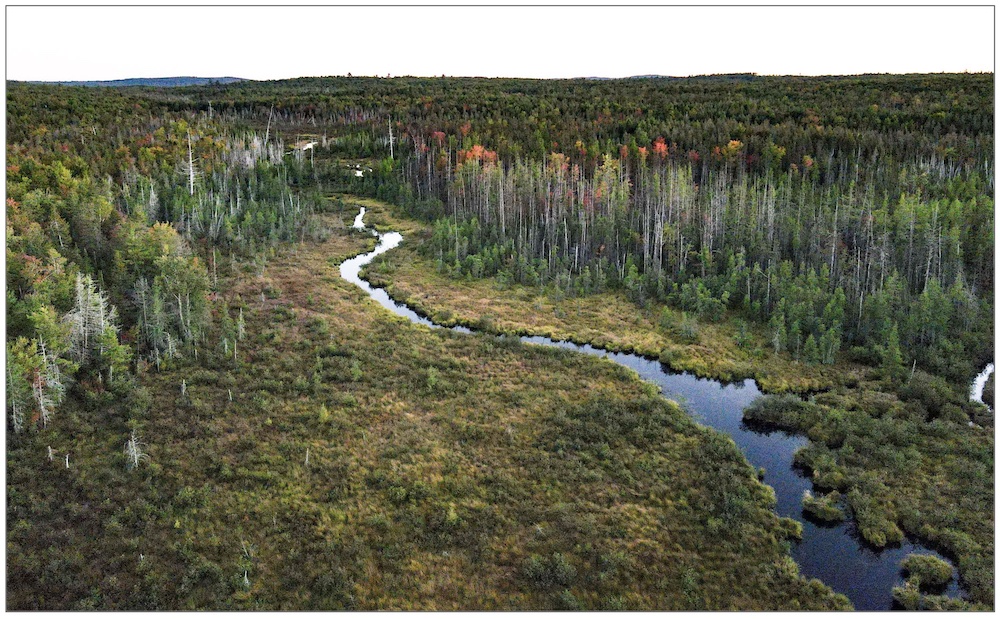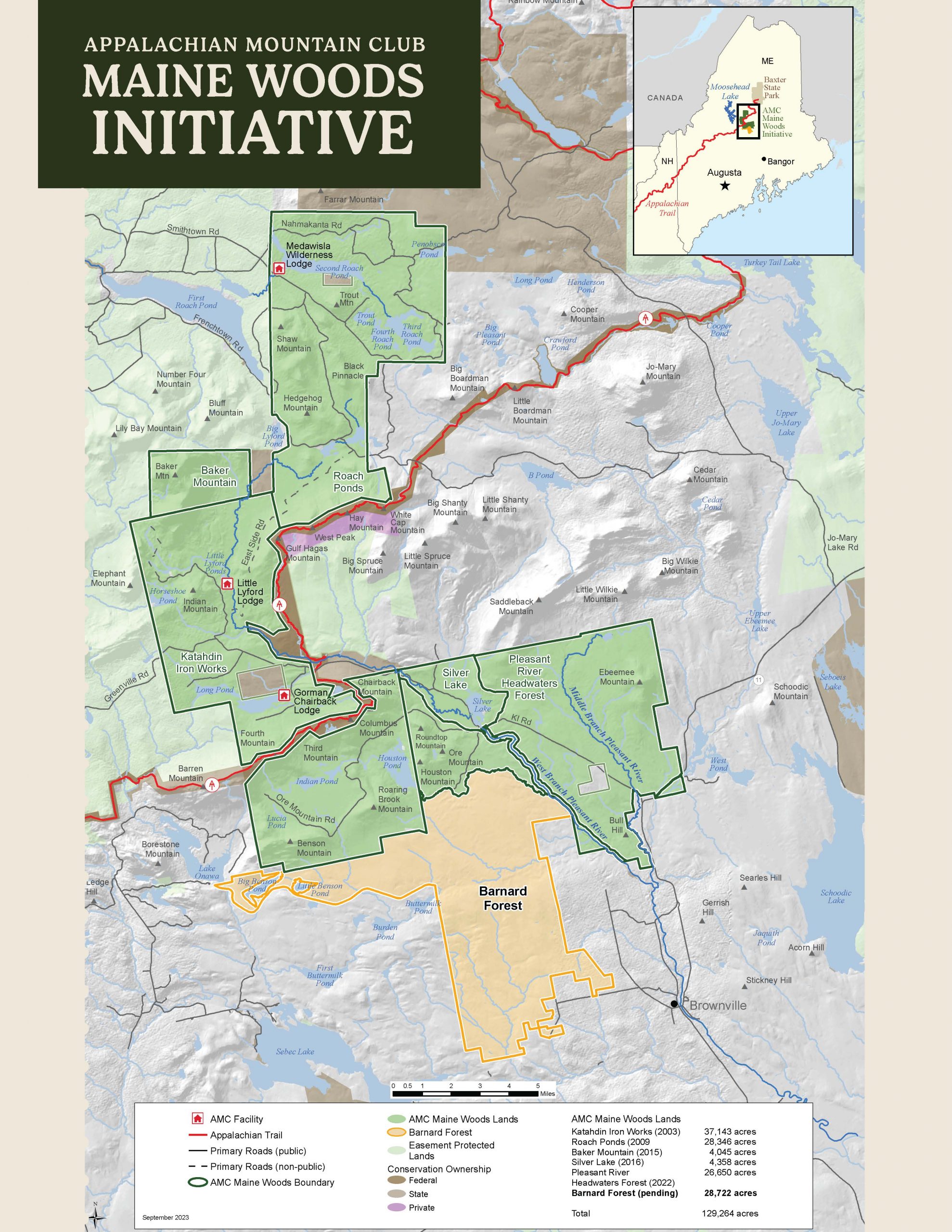
- Details
- By Chez Oxendine
- Real Estate
The Penobscot Nation will regain 1,700 acres of forest and wetlands in central Maine through a transfer from the Appalachian Mountain Club — part of the tribe’s ongoing effort to restore portions of its ancestral territory.
 (Map: Courtesy of Appalachian Mountain Club)The parcel, located in Barnard Township, was included in AMC’s recent $15.2 million acquisition of the nearly 29,000-acre Barnard Forest.
(Map: Courtesy of Appalachian Mountain Club)The parcel, located in Barnard Township, was included in AMC’s recent $15.2 million acquisition of the nearly 29,000-acre Barnard Forest.
Penobscot Nation Natural Resources Director Chuck Loring Jr. told Tribal Business News the acquisition would open the land back up for tribal access along long-unused roads. From there, the tribe planned to apply to have the land taken into trust, which would give the tribe full jurisdiction over resource gathering and harvesting in the area.
“We’re going to enroll this into our forestry program and get a management plan developed - there will be some timber harvesting in the future,” Loring said. “There’s no plans for development or housing or anything - it’s not too far removed, but far enough that I don’t see infrastructure development really on the plate.”
AMC purchased the northern half in 2023 and finalized the southern half Tuesday with assistance from the Malone Family Land Preservation Foundation and the Conservation Fund, according to a story by the Portland Press Herald. AMC Vice President of Land and Conservation Steve Tatko approached the tribe during the acquisition process to arrange the return.
In an interview with Tribal Business News, Tatko said that much of AMC’s work is aimed at improving public access to the outdoors, as was the case with the Barnard Forest purchase. The Penobscot transfer comes as a result of a longtime relationship with the tribe and a push to widen their access to the area, which had been shut off for more than 20 years by the prior owners.
“I knew access to the land already owned by the nation was challenging, and so we had this opportunity to fix some access problems the tribe had for decades,” Tatko told Tribal Business News. “We were happy to have the tribe at the table.”
The land, which contains former logging roads and lies within the Pleasant River watershed, will be transferred without conservation easements, allowing the tribe to manage it under its own forestry and habitat priorities. The transfer will include roadwork done to rebuild bridges and improve inroads that fell into disrepair while the land was closed off, Tatko said.
AMC estimates the final cost of the land transfer will be $2.3 million, which has already been raised as part of a $23 million capital campaign to purchase the property. Tatko said the group expects the transfer to complete by early next year.
“We didn’t want to close on the property without raising the money for the transfer - it was important to us that it was raised simultaneously,” Tatko said. “If you’re doing the kind of work we do, you’ve got to stand behind the people that were originally connected to these places.”
Loring said the addition will improve access to adjacent trust lands and support wildlife and water quality goals, including habitat restoration for Atlantic salmon.
The transfer follows larger landback initiatives involving the Penobscot Nation. In partnership with the Trust for Public Land, the tribe is preparing to receive roughly 30,000 acres near Katahdin Woods and Waters National Monument — the largest such return from a U.S.-based nonprofit to a tribal nation without land-use restrictions.
That project, announced in 2023, is part of a broader Wabanaki-led effort to expand tribal stewardship across Maine.
Editor's Note: This story has been updated with additional information about the cost of the transfer and comments from Steve Tatko, vice president of land and conservation at AMC.
